How to Choose the Perfect Knife for Your Next Outdoor Adventure
3rd Mar 2025
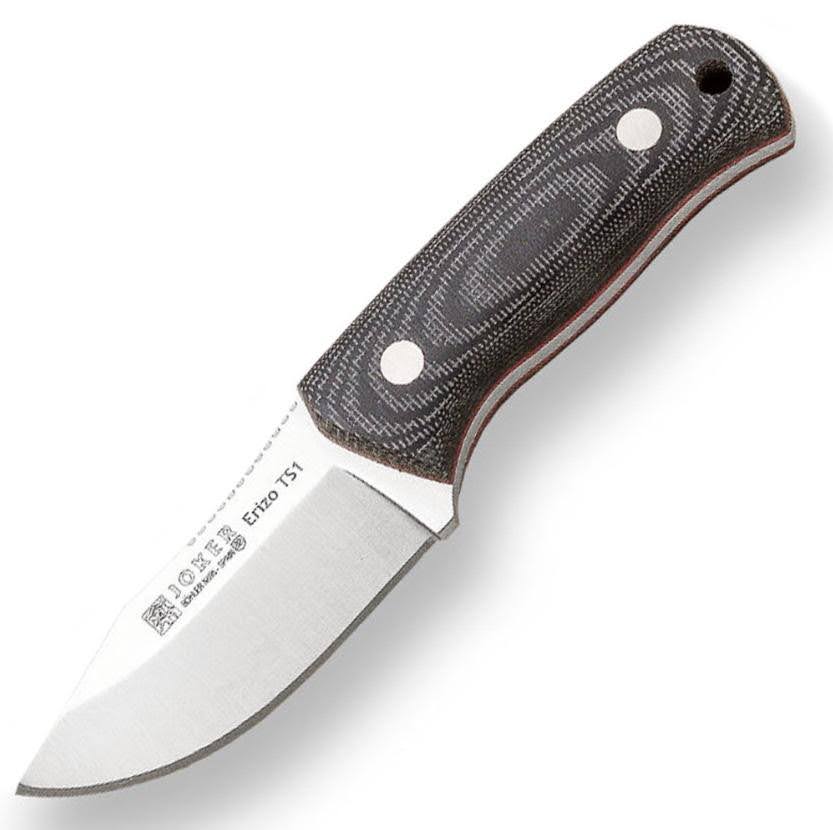
Joker Erizo TS1 Micarta Handle Outdoor Knife
Whether you're gearing up for a weekend camping trip, planning a hiking expedition, or preparing for a survival situation, one piece of gear that should never be overlooked is a high-quality knife. A versatile and reliable knife is an invaluable tool for a wide variety of tasks, from preparing food and building shelter to self-defense and first aid in emergencies. But with so many different knives available, how do you know which one is right for your next outdoor adventure?
In this guide, we'll break down the types of knives suited for various outdoor activities and provide tips on what to look for when choosing a knife for your needs. We'll also feature some of our own standout knives!
Understanding the Key Types of Outdoor Knives
When selecting a knife for your outdoor adventures, it’s essential to consider the type of activities you’ll be doing. Different knives serve different purposes, and understanding these distinctions will help you make the right choice. Below are the most common types of knives you'll encounter for outdoor use:
1. Camping Knives
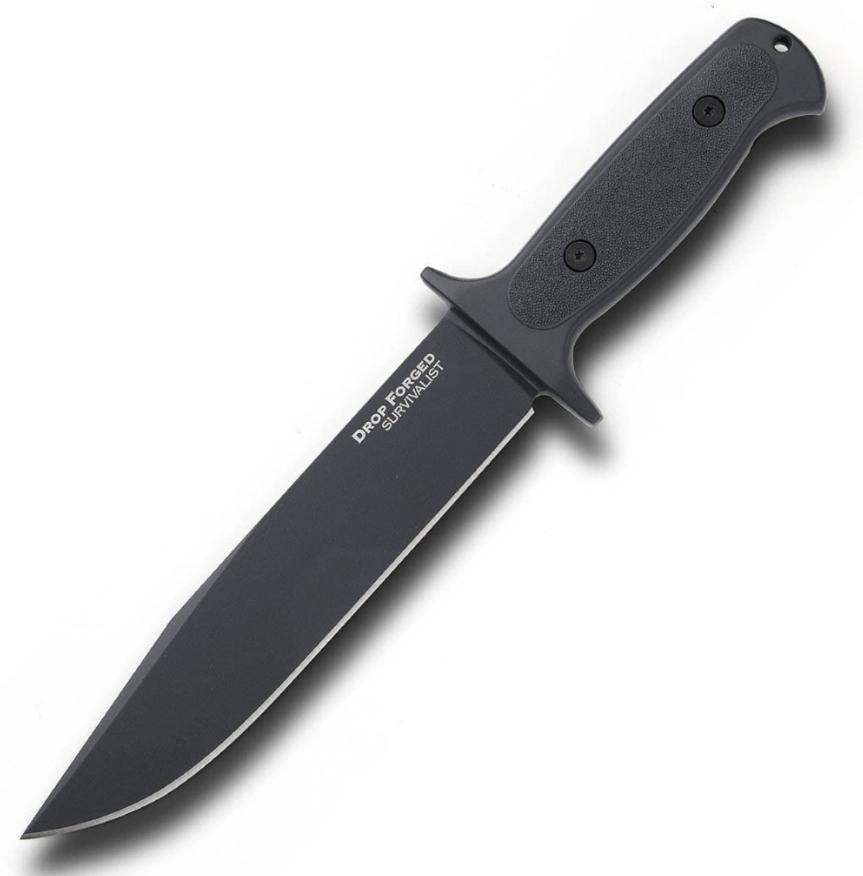
Camping knives are designed for general tasks around the campsite. These knives are versatile and durable, making them perfect for everything from preparing meals to cutting firewood. A good camping knife should have a sturdy blade that holds an edge and a comfortable handle for long-term use.
Features to look for:
- Full tang: This means the blade runs through the handle, providing greater strength and durability. It's crucial for tasks like chopping wood or batoning, as the tang offers support and balance.
- Mid-sized blade: A blade between 3-5 inches is ideal for handling most camping tasks. It’s not too heavy for delicate tasks like cutting rope but also strong enough to handle bigger jobs when necessary.
- Comfortable grip: Choose a handle material that provides a secure, non-slip grip, even when wet. Materials like rubber, micarta, and textured wood are great for ensuring you have control over your knife in various conditions.
One great option is the Drop Forged Survivalist Fixed Blade Knife.
2. Hiking Knives
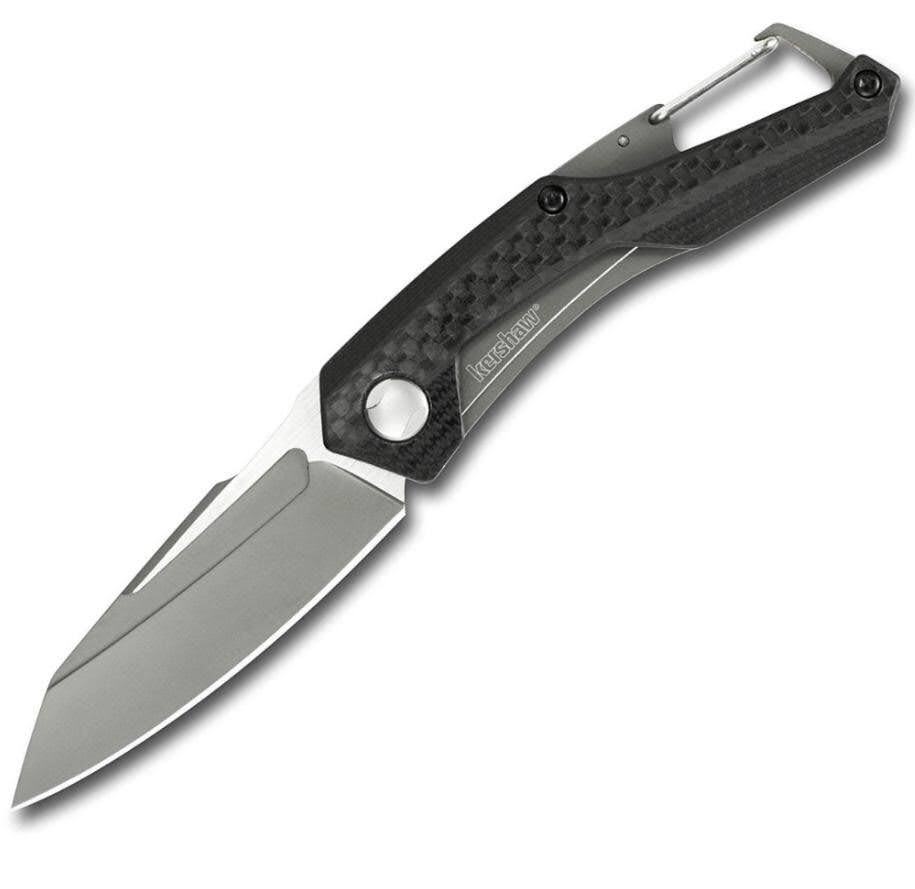
Kershaw Reverb Lightweight Folding Pocket Knife
Hiking knives are typically smaller and lighter than camping knives, and designed for more portable use when you're on the move. They are intended for lighter tasks like cutting rope, opening packages, and minor food preparation. When choosing a hiking knife, weight and size are key considerations. Since weight is always a factor when hiking, a compact knife is an essential item that won’t add too much bulk to your pack.
Features to look for:
- Compact design: A smaller, lightweight knife is easier to carry and less cumbersome on long hikes. Look for knives that are designed to be discreet and easy to store without taking up valuable space.
- Versatile blade: A straight blade or a partially serrated blade offers a good balance for cutting and sawing through different materials. If you're not sure which to choose, a knife with a combination of both can offer maximum versatility.
- Sheath: A knife with a quality sheath that can be attached to your belt or backpack makes it convenient to carry. Many hiking knives come with a clip or belt loop to keep them accessible when you need them quickly.
The Kershaw Reverb Lightweight Folding Pocket Knife is an example of a knife that would be the perfect knife to include on a hike.
3. Survival Knives
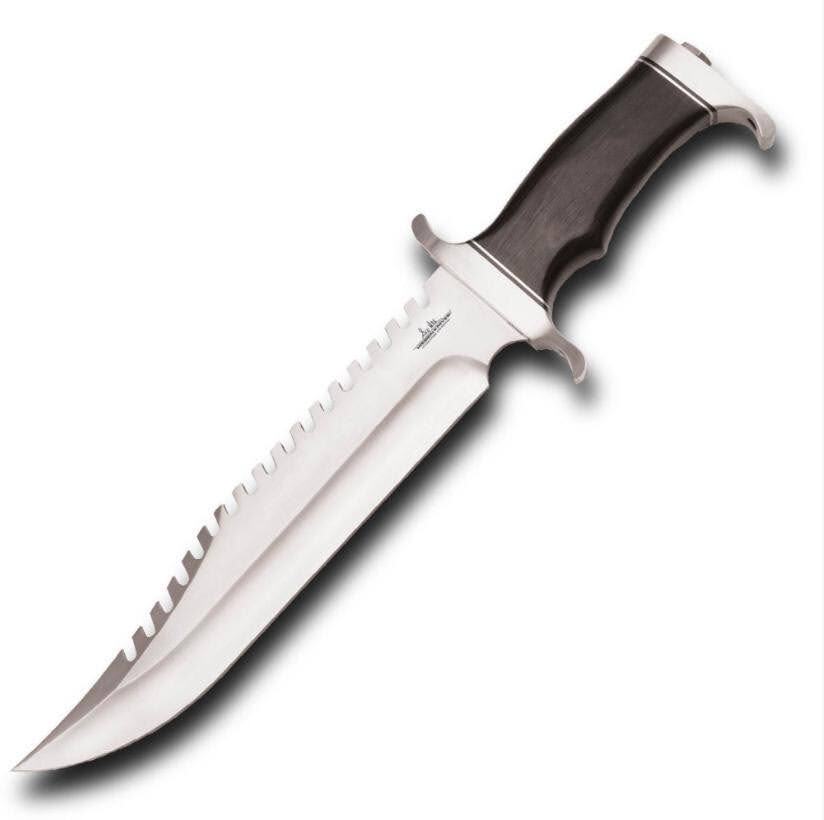
Hibben Extreme Survival Bowie Knife
Survival knives are designed for extreme situations where reliability and multi-functionality are crucial. These knives must be able to handle tough tasks like cutting wood, building shelters, hunting, and even self-defense in emergencies. In a survival scenario, your knife could be the difference between life and death, so it’s essential to have one that’s durable and can be trusted to perform under the harshest conditions.
Features to look for:
- Full tang construction: A must-have for strength and durability. A full tang means the blade extends all the way through the handle, giving it greater strength for chopping and other heavy-duty tasks.
- Longer, thicker blade: A larger, sturdier blade (around 5-7 inches) is ideal for chopping, batoning wood, and other demanding tasks. It allows you to cut and split wood effectively, an essential function in survival situations.
- Multipurpose features: Look for knives with additional features like a built-in fire starter, sheath with storage, or even a pommel for hammering. Some survival knives also include a compass or signaling mirror built into the sheath.
A standout survival knife from Atlanta Cutlery is the Hibben Extreme Survival Bowie Knife . This knife is designed for tough jobs in survival situations.
4. Tactical Knives
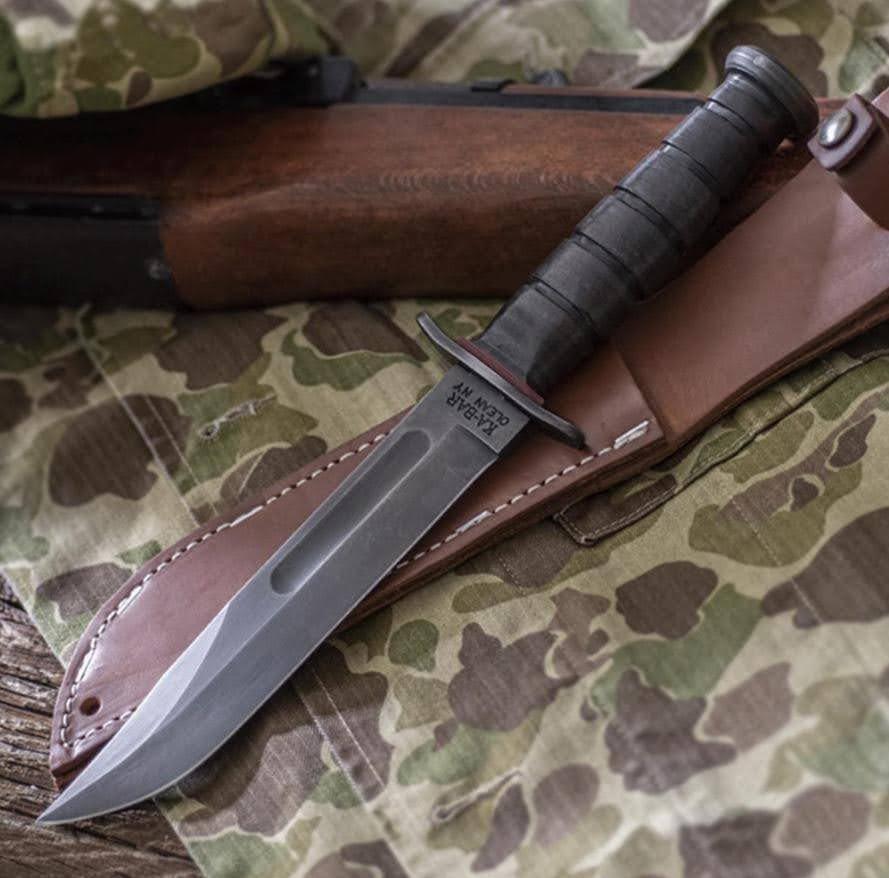
KA-BAR Red Spacer Fighting Knife
While not a typical tool for all outdoor activities, tactical knives are sometimes necessary for self-defense, especially when you are venturing into areas where wildlife or other threats may pose a danger. These knives are often used by military and law enforcement personnel and are designed for quick access, precision cuts, and self-defense.
Features to look for:
- Quick deployment: Tactical knives typically feature a mechanism that allows the blade to be deployed quickly, often with one hand. Automatic-opening knives or spring-assisted mechanisms are often the preferred choice for tactical use.
- Durable, sharp blade: AA blade that holds its edge well and is resistant to corrosion is key for tactical knives. Whether you are cutting through rope or defending yourself, you need a blade that won't fail under pressure.
- Ergonomic, non-slip handle: A handle designed for rapid use, often made from textured materials, is crucial in emergency situations when precision and speed are essential.
For a tactical knife with superior reliability, consider the KA-BAR Red Spacer Fighting Knife.
5. Fishing Knives
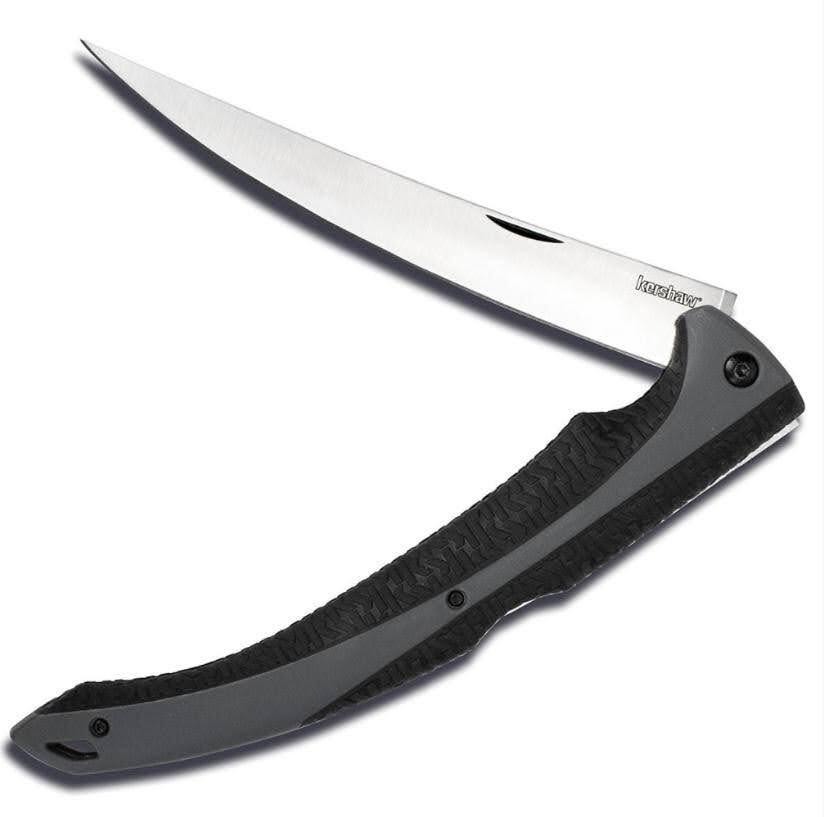
Fishing knives are specifically designed for cleaning fish and cutting fishing lines. These knives have thin, flexible blades that can easily slice through fish skin and flesh, making them an essential tool for any angler.
Features to look for:
- Flexible blade: A thin, flexible blade allows for precise cuts and filleting. A flexible blade is also helpful when cutting through tougher materials like fishing line.
- Non-slip handle: A Look for a handle with a secure grip, as wet hands and fish scales can make it slippery. Materials like rubber or textured composites are ideal for fishing knives.
- ECorrosion-resistant steel: Since these knives will often be exposed to water, choose a blade that resists rust and corrosion. Stainless steel or high-carbon steel coated with protective finishes will ensure the longevity of your knife.
The Kershaw Folding Fillet Knife is perfect for fishing enthusiasts. With a corrosion-resistant blade and an ergonomic, non-slip handle, it’s designed to make cleaning fish a breeze.
Key Considerations When Choosing Your Knife
When selecting the perfect knife for your outdoor adventure, there are several factors to consider to ensure you get a tool that meets your needs:
- Blade Material: A thin, flexible blade allows for precise cuts and filleting. A flexible blade is also helpful when cutting through tougher materials like fishing line.
- Non-slip handle: The quality of the steel is crucial. Stainless steel blades are corrosion-resistant but may not hold an edge as well as carbon steel, which is stronger but more prone to rust. Choose a blade that offers the right balance for your planned activities.
- Blade Length: A longer blade is better for chopping and cutting larger materials, while a shorter blade is more maneuverable and better for fine tasks. Consider what tasks you'll most frequently need the knife for when deciding on the blade length.
- Handle Material: Look for a handle that is comfortable to hold for extended periods. Materials like rubber, wood, and textured composites offer the best grip, even in wet conditions. Ensure the handle is ergonomically designed to minimize hand fatigue.
- Weight: A lighter knife is easier to carry, but a heavier knife offers more durability and force for cutting tasks. Find a balance based on the tasks you’ll need the knife to handle. For instance, if you're carrying it all day on a hike, a lighter knife will be more comfortable.
- Sheath: A high-quality sheath protects the blade and makes it easier to carry your knife safely. Many sheaths also feature additional storage for small tools like fire starters or sharpening stones.
Final Thoughts: The Perfect Knife for Every Adventure
No matter what your outdoor plans are, there's a knife suited to your needs. Whether you’re camping, hiking, fishing, or preparing for a survival situation, selecting the right knife will make your adventure more enjoyable and safe.
Call to Action: Ready to Get Equipped?
Don’t wait for your next adventure to catch you unprepared. Visit Atlanta Cutlery today to browse our extensive selection of outdoor knives and gear. With expert craftsmanship and a variety of knife options, you’ll find the perfect blade to meet your needs. Order now and get ready to take on your next adventure with confidence!
Shop now at www.atlantacutlery.com.


 Gift Cards
Gift Cards